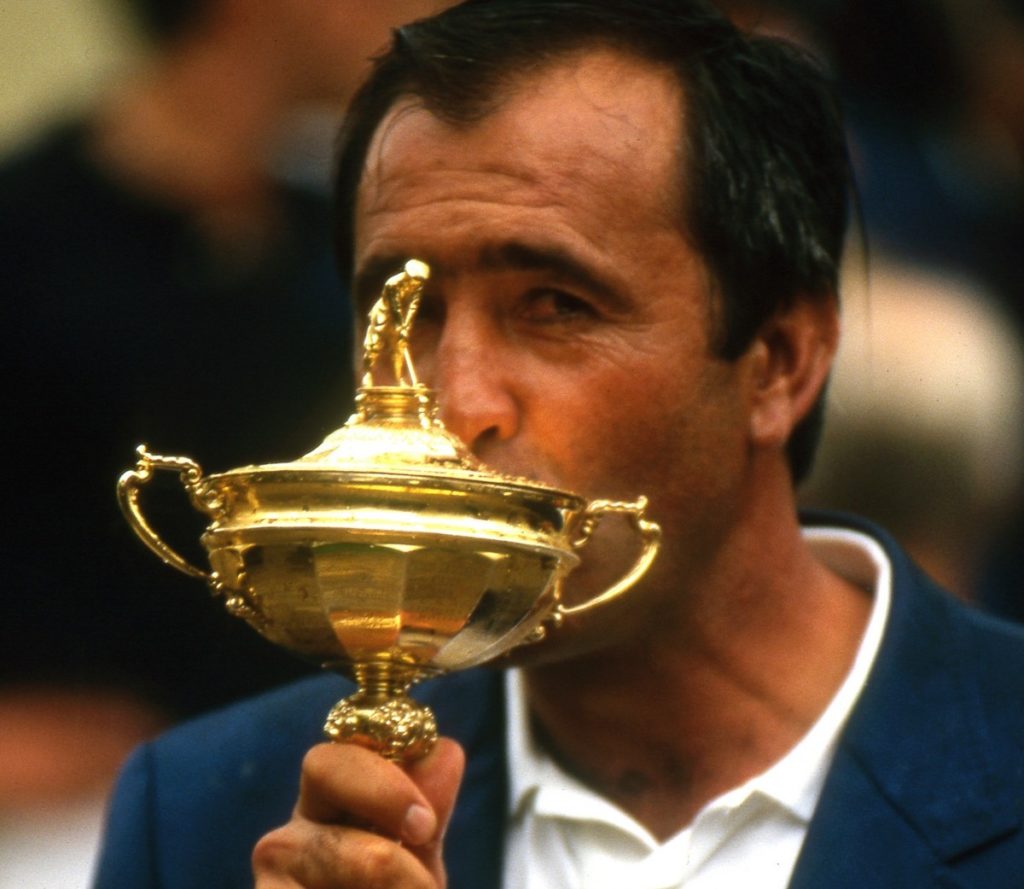Ryder Cup – Seve Ballesteros
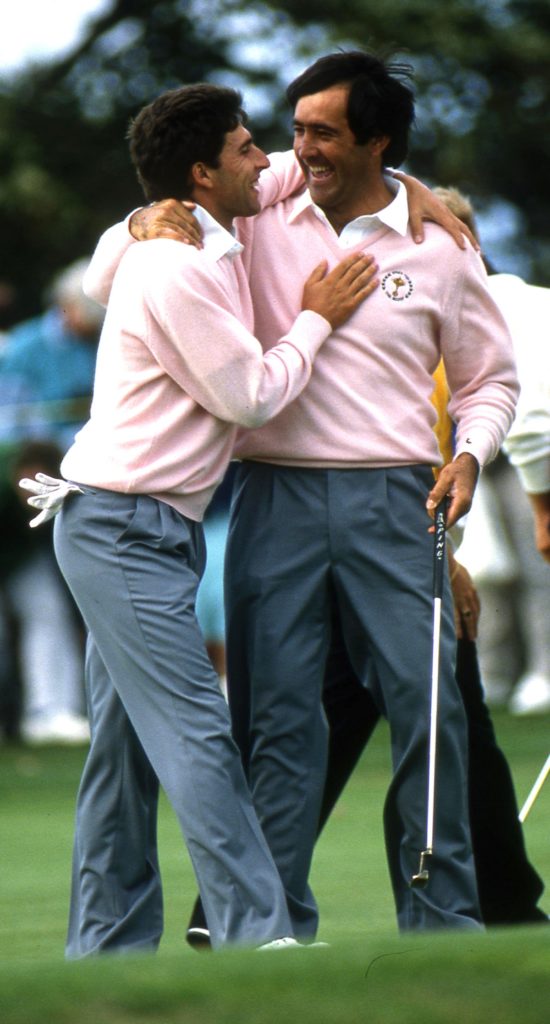
Ryder Cup – Seve Ballesteros
With exhaustive research and exclusive new material garnered from interviews with players and captains from across the decades, Behind the Ryder Cup unveils the compelling truth of what it means to play in golf’s biggest match play event, where greats of the game have crumbled under pressure while others have carved their names into sporting legend. Behind the Ryder Cup takes you into the rarefied atmosphere of the American and European team rooms, locker rooms and inside the ropes, right to the heat of the action itself. In the prime of his life, Seve Ballesteros embodied the passion and the spirit that lives on today in golf’s greatest showpiece event – these brief extracts from Muirfield Village and Kiawah Island offering a glimpse of the great man’s legacy
Extracts courtesy Peter Burns and Ed Hodge
Ryder Cup – Seve Ballesteros
1987, Muirfield Village Golf Club, Dublin, Ohio
1987 marked sixty years since Ted Ray had led the first British team across the water to America for the inaugural Ryder Cup. Half a dozen decades later, Tony Jacklin’s class of ’89 boarded Concorde to fly to Muirfield Village and ‘the course that Jack built’.
Shortly after his triumph at Muirfield in the 1966 Open Championship, Nicklaus purchased a plot of land near his home in Columbus, Ohio, and set to work creating Muirfield Village. A beautiful yet difficult course, it was coined by some as ‘the Augusta of the North’. The US PGA then appointed its creator as the US captain tasked with regaining the cup following a watershed European victory at The Belfry in 1985…
Jack Nicklaus : Muirfield Village had been nicknamed the ‘Augusta of the North’, which was great. I had set out to build not only an outstanding golf course for every level of player but a magnificent course for watching a tournament. I thought the Masters was a great thing for golf and I wanted to do the same thing in Columbus.
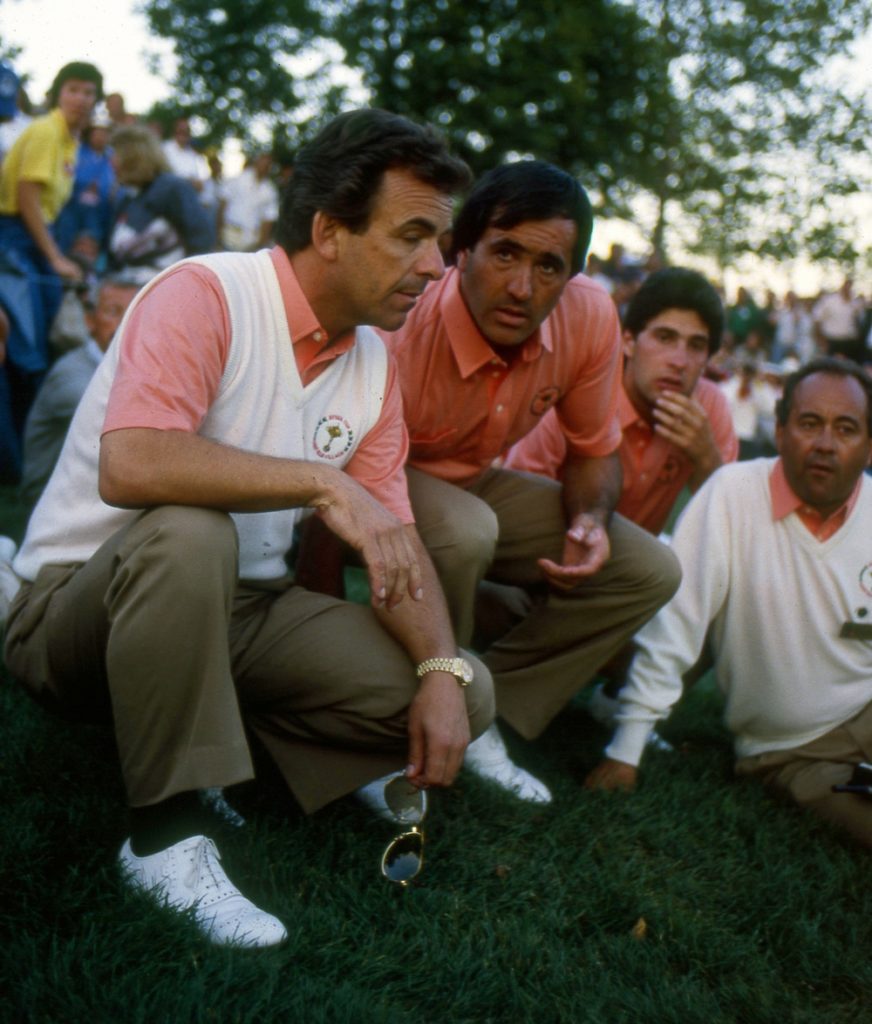
Photography by Matthew Harris/TGPL
Ryder Cup – Seve Ballesteros
Tony Jacklin : I remember we landed in America as champions, brimming with confidence. It was a marvellous year to be captain, because we had great returning strength and experience from the previous Ryder Cup, but we had new blood, too. What a roster I had! Seve, Faldo, Langer, Woosnam, Sandy Lyle, the new face of Jose Maria Olazabal. All of them true greats who would end up with multiple major titles on their resumes. I remember being asked by the press what I thought was going to happen that week.
‘Oh, we’ll win,’ I said, simple as that. I meant it. It wasn’t a boast. It wasn’t a challenge. I wan’t trying to anger the Americans or motivate my own team. It was just what I thought, what I felt. Question. Answer. Next!
Sam Torrance : It couldn’t have looked worse for us, playing against a team captained by Jack Nicklaus on a course designed by him. But we had some pairings that week that were just phenomenal: Langer and Lyle, Seve and Ollie, Faldo and Woosie. These guys were unbeatable and they played golf that had just not been seen before from Europeans.
Ryder Cup – Seve Ballesteros
Bernard Gallacher : Seve was so dominant that the big problem was getting somebody to fit with him because Seve made his own team nervous. I worked with Manuel Pinero, it worked with Paul Way, but the real combination was Severely and Ollie. You just can’t put these superstars with just anybody because some of the lesser players get a bit jumpy and a bit nervous and don’t play their own game playing with such a good player.
Jose Maria Olazabal : Seve gave me a call when I was fifteen years old and asked me to play a charity match against him at his home club, Pedrena. And I said ‘Yes’ without knowing the implications of that answer in my future career. Something really special happened that day. I don’t know what it was but it was truly special. A few years later I played in my first Ryder Cup at Muirfield Village, I was a twenty-one boy, and the captain, I guess, didn’t know what to do with me. Seve approached Tony and said: “Tony, I will play with Ollie.” And the rest is history.
The relationship has so many memories of moments that are unique to us from the Ryder Cup. In a way, he was like a big brother to me. He was always helpful and he gave me a lot of belief. Seve was incredible the way he played golf – the way he visualised shots, how he imagined them, how he escaped from unbelievable situations. And he was so strong. He never gave up. I will never forget the little walk from the putting green to the 1st tee. I was shaking like a leaf. The crowds were huge. Very loud. So I kept my head down, and Seve approached me as we were walking to the first tee. He looked at me and said, ‘Jose Maria, you play your game, I’ll take care of the rest.’ and he did. He was a great figure, I think not just for myself but for the whole European squad, not just that year but every year that he played in the team. He was a special man.
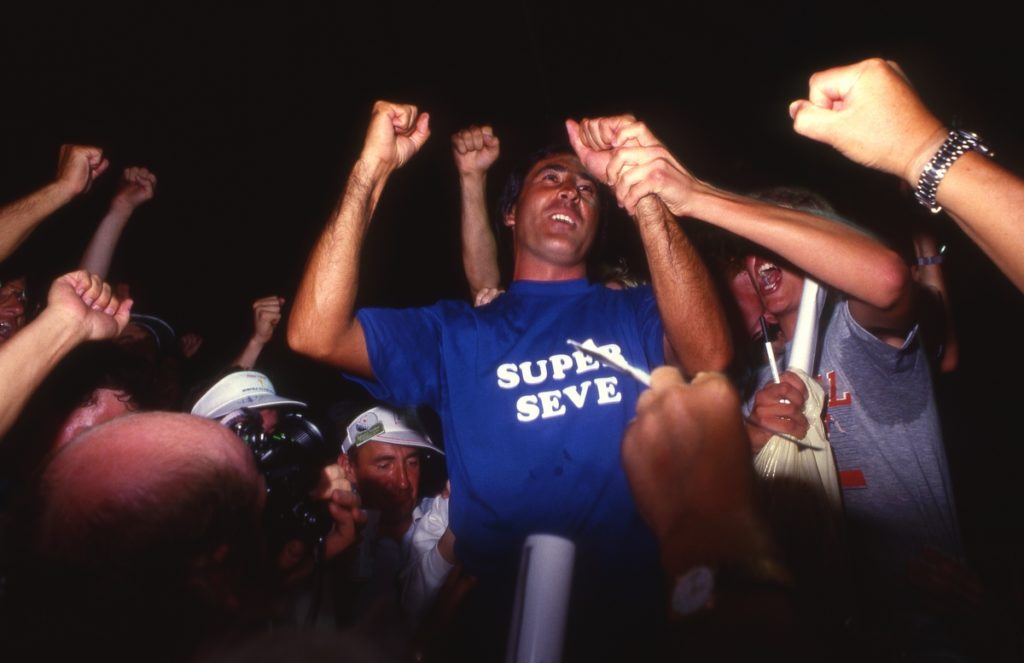
Photography by Matthew Harris/TGPL
Ryder Cup – Seve Ballesteros
Naturally, Seve and Ollie would kick off their partnership with a point, a 1-up foursomes victory over Payne Stewart and Larry Nelson. And in their very next outing, a fourball encounter with Curtis Strange and Tom Kite, the Ryder Cup witnessed one of Seve’s legendary magical moments…
Curtis Strange : We had a rules meeting the night before, when it was made clear players should mark if they were going to be standing on an opponent’s through-line [the line a missed putt might travel beyond the hole]. On the first hole, Ollie putts up to three feet or so, but he’s on my through-line. Seve is away, just off the green. He wants Jose to putt. I point out that he’ll be standing on my through-line. Seve asks if that will bother me. I tell him it will. So he shrugs, walks over to his ball and chips in to win the hole. Incredible. I almost wanted to applaud.
In the final four ball match of the afternoon, the Spaniard’s ultimate 2&1 victory secured Europe’s first ever whitewash in any series in the Ryder Cup’s sixty-year history.
Seve Ballesteros : I confronted Curtis Strange again in the singles. It was a charged, tense atmosphere. At the tenth, Strange hit his third stroke out of turn, and I had to ask the umpires to warn him, although I didn’t ask for the redress within my rights. After two more holes he’d reduced my lead from two to one. I looked at the scoreboard and realised I couldn’t afford any loss of concentration; the way things were going my game was crucial, even though we had a five-point lead going into the singles. At the seventeenth I learned that Langer and Nelson were level at the last hole. As I was two up with two to play, if Bernhard drew his game – something I knew might happen – I only had to beat Curtis for Europe to triumph. My second shot was an 8-iron which left the ball in the centre of the green, a good seven metres from the pin. Strange could only make par and my putt left the ball half a metre from the hole. I had the game in the bag. I holed my putt and immediately discovered that that shot had given us fourteen-and-a-half points. My putt at the eighteenth to win the Open at St Andrews in 1984 is undoubtedly the happiest stroke I’ve hit in my whole career, but this shot to win the Ryder Cup on the American’s home soil for the first time isn’t far behind. The great pleasure I derived from winning the Ryder Cup was complemented by my pleasure of defeating Strange, then considered by the Americans to be the best player in the world. A few moments after my ball went in the hole, Tony Jacklin, Nick Faldo and I hugged each other on the edge of the green. The three of us cried. We were so excited.
When Ballesteros concluded his match on the seventeenth he punched the air repeatedly while Jacklin wept with his team and Olazabal danced on the green. History had been made.
Gordon Brand Jnr : I remember Olazabal dancing on the green after we won. Some people thought he should rein it in a bit, but Jack came onto the green and said, ‘Don’t worry lads, don’t worry about the green. I’m going to dig it up on Monday.’
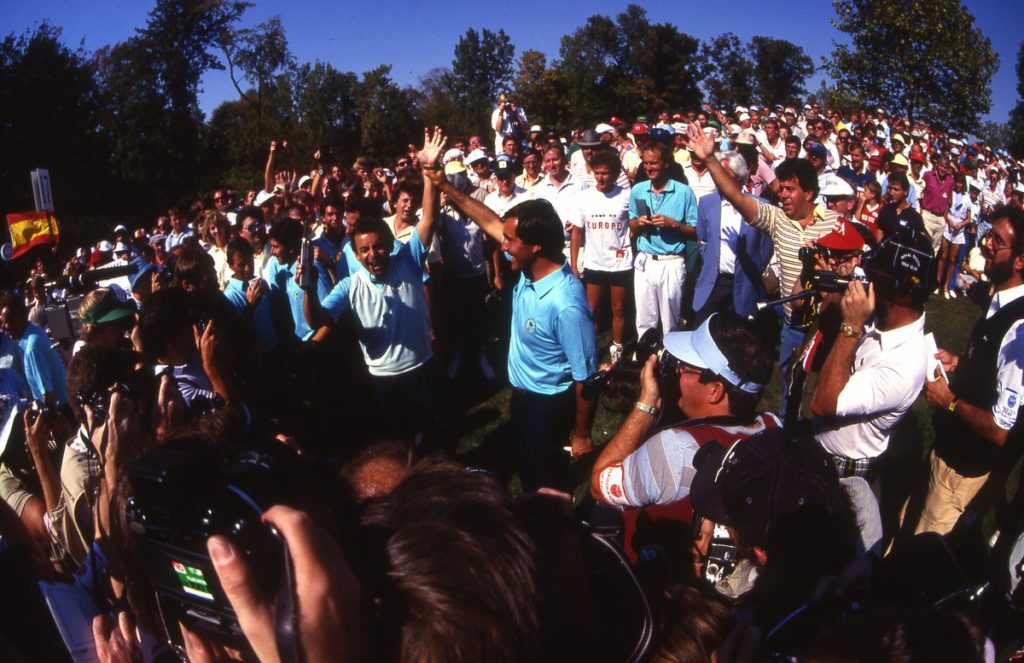
Photography by Matthew Harris/TGPL
Ryder Cup – Seve Ballesteros
Jack Nicklaus : I have always had wonderful respect for Seve’s ability, how he played the game, and the flair he brought to the sport. It was his creativity, his imagination and his desire to compete that made him so popular not only in Europe but throughout American galleries too. He was a great entertainer. No matter the golf that particular day, you always knew you were going to be entertained. Seve’s enthusiasm was just unmatched by anybody I think that ever played the game. Seve was, without argument, a terrific player – his record speaks for itself – but more important was his influence on the game especially throughout Europe.
Through the years, his involvement with the Ryder Cup, as both a player and captain, served to further elevate the stature of the matches. He was probably the most passionate Ryder Cup player we’ve ever had. I think his teammates always rallied around him and that passion of his. He was Europe’s emotional and spiritual leader, the heart and soul of their team. The Ryder Cup was something that was very, very special to Seve and Seve was very special to us.
Ryder Cup – Seve Ballesteros
1991, The Ocean Course, Kiawah Island, South Carolina
The 1991 Ryder Cup, held on the Ocean Course at Kiawah Island, set new standards for tension and high drama. Following the conclusion of the first Gulf War earlier in the year, there was an intense patriotism that surrounded the event – even if many of the host nation seemed to have overlooked the fact that the European nations had been allies in the conflict. Dave Stockton was the man placed in charge of the home team’s task to regain the Ryder Cup after an eight-year absence from the PGA Tour’s trophy cabinet, while Bernhard Gallacher had the daunting prospect of following in Tony Jacklin’s footsteps as leader of the European defence….as ever, Seve was
Bernhard Langer : The 1991 Ryder Cup was the first time that the Ryder Cup nearly got out of hand. Seve was accused of gamesmanship, and there were comments and things written that were not what the game of golf is about. While the Ryder Cup is very important to both sides, it has a great tradition of sportsmanship and fairness. It is about the best twelve golfers from Europe playing against the twelve best golfers from the United States, with a view to creating friendship between the two nations, not to wage war on the shore.
Dave Stockton : Some say the crowds were over the top but all I know is we had the best support we’d ever had. I’m proud of the role Kiawah played in the history of the competition – I think it was the start of the Americans realising the Ryder Cup meant something.
David Feherty : It was absolutely the hardest golf course that I’d ever seen. As close to unplayable, unmanageable as I’ve ever seen. The weather was OK – not much rain but it blew. The golf course is built right on the ocean with greens built up, so you have to have some kind of a high shot to hold the green, but it requires a low shot to keep out of the wind. That’s a fundamental design flaw. I heard it was supposed to be like Scottish and Irish golf but I’d been all over Scotland and Ireland and I’d seen nothing like that.
Paul Azinger : There’s nothing like taking on Europe’s finest first thing in the morning! Seve and Jose had never been beaten in Ryder Cup action when they had played together. Chip [Beck] and I were hoping to end that streak.
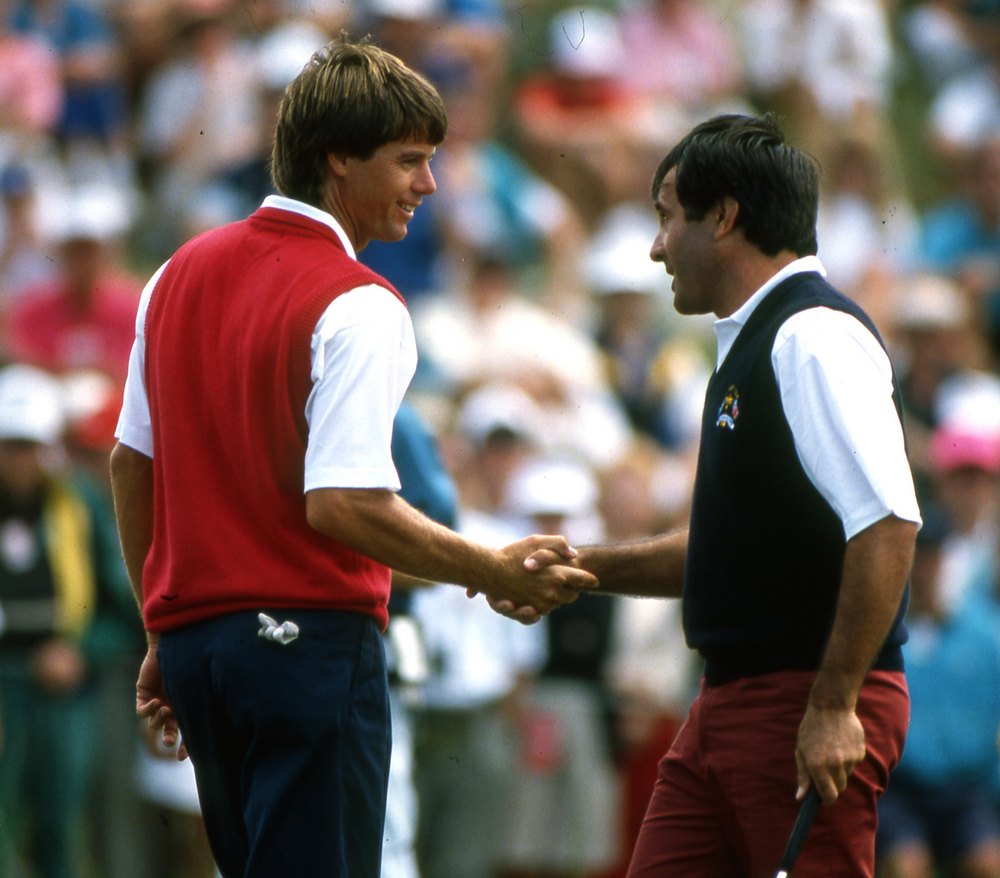
Photography by Matthew Harris/TGPL
Ryder Cup – Seve Ballesteros
We were embroiled in a conflict over what I considered a controversial drop of the ball on the second, and we had another question over their lost ball at the fourth. It went on like that all day, one controversy after another. By the ninth hole I was livid. When Jose hit his drive off to the right I was right there to help spot the drop. The referee was intimidated by Seve and Jose , so he simply stood aside and waited to see how we would settle things. Seve and Jose wanted to drop the ball much further up the fairway from where I thought the ball had gone into the water. We argued over it for a while, and finally Seve looked at me in disgust and said, ‘OK, where do you want us to drop the ball?’
‘You need to drop it back here,’ I said as I pointed to the original position I had indicated. Reluctantly Seve dropped the ball at that spot.
On the tenth tee Seve and Jose accused me and Chip of hitting the wrong compression ball. I was playing a 90 compression ball and Chip was playing a 100-compression. Because a 100 compression ball is wound more tightly, it flies further. When we got to number seven, which is a par five, Chip was going to hit my 90 compression ball in the hope that I could put our second shot with the same ball onto the green. Looking at the distance, I was a little sceptical. ‘I’m not sure we can hit this green,’ I said. ‘If you hit your 100 compression ball, then i can lay up and you can hit your 100 onto the green.’ Chip agreed and that’s what we did. Seve and Jose had overheard this and when we got to the tenth they called the officials to charge us with playing with the wrong balls. I was furious! I couldn’t believe it was happening, especially after all the questionable stuff that had been going on already.
The officials ruled with the home pairing as the infringement had not been called up at the time on the seventh, and play continued, but in many ways Seve had achieved his goal – he had got under his opponents skin! The European pair dug in and began to claw back the deficit, eventually drawing level at the thirteenth and moving one up at the fifteenth. When Seve rolled in a snaking putt at the seventeenth to move two ahead, the Europeans had the match and an important point. Azinger and Beck could barely bring themselves to shake their opponents’ hands.
Seve Ballesteros : They were three up and we called the referee over and the referee said one thing, Chip Beck said another thing. Azinger said another thing and all of a sudden Jose says to me, ‘OK, let’s go and play, we’re going to beat these guys.’ And we won on the back nine, it was fantastic. That was probably the best nine holes we ever played together.
David Feherty : The Ryder Cup is an incredible experience. You look around at players you respect and whom you hope respect you. And you sense they’re expecting a certain level of performance from you and you daren’t let them down. And if you don’t deliver, you will never be able to face them again. Yet at no stage did I want to get out of the place, to leave all the pressure behind. To walk away would be to deny everything that you are; to deny your reasons for playing the game. Your whole golfing life has been geared towards becoming a member of this exclusive club and now that you’re in, there’s no turning back.
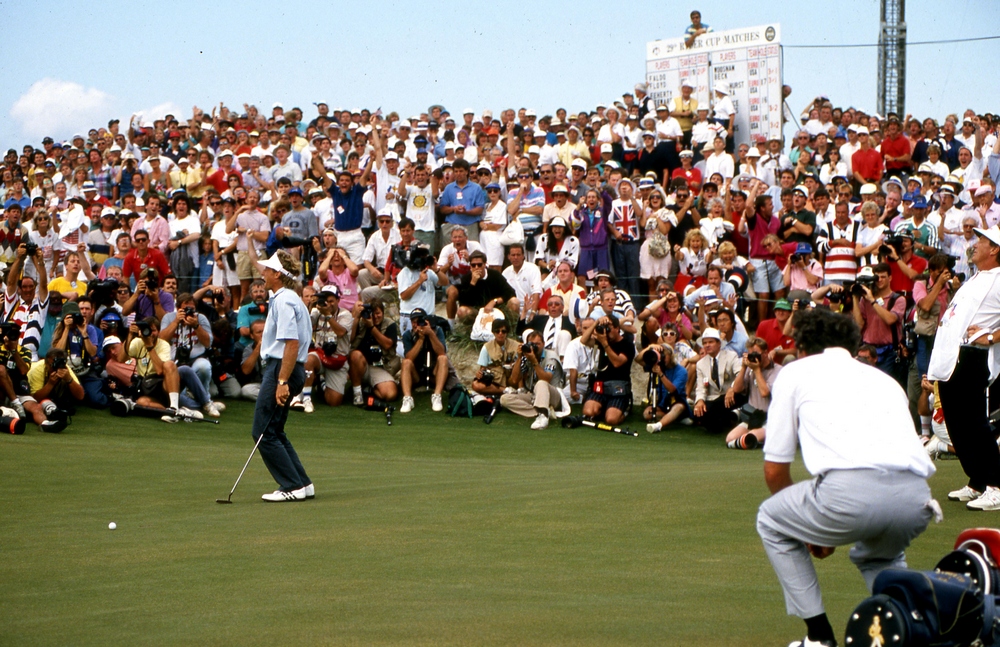
Photography by Matthew Harris/TGPL
Ryder Cup – Seve Ballesteros
No player but Seve had the ability to make my hair stand on end simply by watching him play. By that time, I had idolised him for the best part of fifteen years, since he first hit the headlines at Birkdale in 1976. I found his presence to be quite extraordinary and I can still picture him prowling around, prodding players, grabbing them by the back of the neck, hugging them. He was a very physical person; personal contact was very important to him as a means of communication. At Kiawah, he made a particular point of coming to the newcomers in the side, players like David Gilford and myself, Paul Broadhurst, and Steven Richardson. He deliberately made himself feel small in our company so as to strengthen the bond between us. He bared his soul to us, telling us of his own vulnerability, so that we might think of him as an equal, as just another member of the team. His motivational powers were phenomenal and as far as he was concerned, we were all in this thing together, all pulling together.
Before the singles matches on Sunday Seve took me aside. ‘They put you out early because they think you will lose,’ he said, then grabbed me by my shirt and chest hair and pulled me close. ‘But I know you have this heart.’ I got chills. I thought, ‘Wow, he believes I can win – and so do I.’
Mark James : Seve was always fantastic. He could have played with my mum in the Ryder Cup and been quite happy and it wouldn’t have surprised me if they had got half a point – and she doesn’t even play.
After the traditional ebb and flow of a Ryder Cup Sunday singles, the War on the Shore lived up to its billing as the outcome ultimately rested with the final match, Hale Irwin versus Bernhard Langer.
Bernhard Langer : Nobody remembers that I was two down with four to go. I had to make three putts on fifteen, sixteen and seventeen to even get into that position to have a chance to win. If I’d missed any of those earlier putts I wouldn’t have even played eighteen. My caddie, Pete Coleman and I, we read the putt together. We both agreed it was a breaking left to right and that I was going to putt it left edge.
I said, ‘What about those two big spike marks?’
‘I see them too,’ he said. ‘They’re pretty bad. They’re pretty high.’

Photography by Matthew Harris/TGPL
Ryder Cup – Seve Ballesteros
It was a sunny, windy afternoon. The greens were crusty and firm. If you hit one of those, the ball could go anywhere. So we decided not to go at the spike mark and take a different line. Putt the ball straight and firm, and hope it wouldn’t break.
Dave Stockton : I couldn’t breathe; I couldn’t swallow.
Bernhard Langer : I made a pretty good stroke, but it did break too much and the ball went right over the side of the hole. I was obviously disappointed. I could have been the hero of the Ryder Cup and now I was the guy who missed that putt. Seve came over and gave me a hug. Eventually he started crying, and that set me off. I just felt bad for my team, that’s all.
Colin Montgomerie : I got into the locker room afterwards and it was a scene that I’ll never forget – one that kept the juices flowing for many Ryder Cups afterwards. Langer came in and he was distraught, he’d just missed his putt to lose and Seve was on the side of the green – and it meant so much to Seve, his passion for it was unbelievable – and Seve and Langer were in the corner of the team room and they were crying, embracing each other and crying openly. I remember thinking, ‘This is different.’
The guy I was playing against, Mark Calcavecchia, was on the beach needing oxygen because he couldn’t breathe. And you’re thinking, ‘God, this isn’t the Walker Cup, this is something else entirely.’ Olazabal was in tears, he’d given his all, Woosnam wanted to hit everybody, it was awful and yet really interesting to see the passion involved and what it meant to those players because it didn’t mean that much to me yet because I hadn’t experienced it before. It couldn’t mean that much to me. They had played in it five or six times each by then and I was a rookie coming into this. I looked at that and I said to myself, ‘I want to be a part of this, I want more.’
Ryder Cup – Seve Ballesteros
Golf Today – Reader book offer
ENTER THE LOCKER ROOM…
…this is a history of the Ryder Cup like you have never experienced it before.
From the original matches that preceded the first official trans-Atlantic encounter between Britain and America at Worcester Country Club in 1927, all the way through to the 40th instalment at Gleneagles in 2014, this is the complete history of the Ryder Cup – as told by the players and captains themselves. With exhaustive research and exclusive new material garnered from interviews with players and captains from across the decades, Behind the Ryder Cup – The Players’ Stories unveils the compelling truth of what it means to play in golf’s biggest match-play event, where greats of the game have crumbled under pressure while others have carved their names into sporting legend. Behind the Ryder Cup takes you inside the rarefied atmosphere of the American and European team rooms, locker rooms and inside the ropes, right to the heat of the action itself.
BEHIND THE RYDER CUP – THE PLAYERS’ STORIES
Don’t miss this fabulous offer from the book publishers Berlinn.
Readers of Golf Today are invited to follow the link below to purchase a hardback edition of the book Behind the Ryder Cup: The Players’ Stories – for the exclusive price of £8 with free p&p in the UK.
https://www.birlinn.co.uk/Behind-the-Ryder-Cup.html
* Note: Enter the code RyderCup2018 at check-out to get the discount.
The RRP of the original book is £20; Golf Today reader offer is for £8 with free p&p in the UK.
